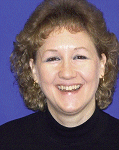Remote Control
##AUTHORSPLIT##<--->
School districts are catching on to SOFTWARE AS A SERVICE, a business modelthat allows administrators to manage essential organizational functions andplug in to student data from anywhere with an internet connection.
 IMAGINE SCHOOL DISTRICT STAFF inputtingschool data and sharing it in real time, managing teacherabsences and arranging substitutes from the comfort ofhome, or deploying IT personnel to the right site at theright time to tackle the highest-priority jobs first. The conceptof managing applications from anywhere with a networkconnection, known by the name of software as aservice (SaaS)'or on-demand computing'is catching onacross business channels and is starting to find a clientelein the education space.
IMAGINE SCHOOL DISTRICT STAFF inputtingschool data and sharing it in real time, managing teacherabsences and arranging substitutes from the comfort ofhome, or deploying IT personnel to the right site at theright time to tackle the highest-priority jobs first. The conceptof managing applications from anywhere with a networkconnection, known by the name of software as aservice (SaaS)'or on-demand computing'is catching onacross business channels and is starting to find a clientelein the education space.
Software as a service is a software distribution model in which essential business applications normally handled by in-house resources are hosted by a vendor or service provider and accessed by customers over a network, usually the internet.
The benefits of SaaS are plain. Allowing anyone with proper authorization to access an application remotely frees up employees and managers from having to be at the office computer to conduct business. Since all users work with the same version of the software, administration of software and collaboration among users are easier. The process also allows for more accurate estimation of application costs. Vendors generally charge a setup fee and then either a per-month or per-user charge for the service. Moreover, IT departments like SaaS because updates occur at the vendor site, instead of in the server room or on individual computers spread throughout a school district.
At first glance, storing and accessing sensitive data from a remote server for back-office operations can be a scary prospect for information-conscious school systems. Districts have a natural anxiety toward handing off technology administration to a third party. Though a perceived lack of security may be a drawback to some districts, the argument could be made that security at an SaaS vendor site is superior to that within a district, because vendors have a vested interest in treating customer data with the highest level of protection and redundancy. Lack of customization also is seen as an issue among larger districts used to having their own performance standards; the availability of quality open source software applications may tempt some districts to create and adapt open source for their own use.
Tracking Student Progress

Marc Sternberg
Software as a service was pioneered by Salesforce.com. Founded in 1999 by former Oracle executive Marc Benioff, Salesforce.com boasts more than 38,000 users worldwide who deploy the company's software tools to manage customers, leads, and analytics.
One of those users is Bronx Lab School in New York City. While developing the high school, a Bill and Melinda Gates Foundation school for low-income families that opened in 2004, Bronx Lab's principal and co-director, Marc Sternberg, discovered that the New York City Department of Education relied mainly on legacy systems to store and disseminate data, which can be unwieldy to interface with. He enlisted the Salesforce. com platform, which he says "puts our staff in control around the information we want to gather. If [information] is going to exist in the Salesforce environment, it's worth that extra effort because you own it, want to use it, and want to take it to the next level."
Bronx Lab is driven by student performance trends, with teachers, staff, and administrators referring to students as "clients," so the ability to input and track data and academic trends is fundamental to the school's operation.
A Booming Market
 THE DEMAND FOR software-as-a-service products is surging.Withinenterprise software markets worldwide, adoption was expected toincrease 21 percent in 2007, according to research from Gartner, a leading information technology research andadvisory company in Stamford, CT. Market intelligence and advisoryfirm IDC, based in Framingham, MA, predicts thatSaaS products will be a $10.7 billion industry by 2009, and Gartnerresearchers foresee SaaS as an $11.5 billion worldwide market by 2011.
THE DEMAND FOR software-as-a-service products is surging.Withinenterprise software markets worldwide, adoption was expected toincrease 21 percent in 2007, according to research from Gartner, a leading information technology research andadvisory company in Stamford, CT. Market intelligence and advisoryfirm IDC, based in Framingham, MA, predicts thatSaaS products will be a $10.7 billion industry by 2009, and Gartnerresearchers foresee SaaS as an $11.5 billion worldwide market by 2011.
Adoption rates for on-demand software can vary widely by industry,Gartner reports, ranging from single percentage points in industriessuch as enterprise content management (1 to 2 percent of total softwarespending) to more than 60 percent (e-learning) and 70 percent(web conferencing).
A recent survey from IT advisory firm Cutter Consortium demonstrates the growth in softwareas a service across all industries; according to the survey, one in fiveeducational organizations has implemented an SaaS product. The topthree reasons survey respondents cited for using SaaS offerings includedgreater return on investment and cost-effectiveness (40 percent),improved application reliability and performance (21 percent), andlower staff-support requirements (19 percent).
After a weekend spent inputting student data and performance trends, Sternberg reports Salesforce.com has worked well tracking attendance, performance, demographic information, and counseling sessions. "It's represented a paradigm shift for us and how we track services to our clients," says Sternberg, whose brother-in-law works for Salesforce and obtained free licenses for the school through the company's foundation, which has helped more than 2,500 nonprofits and educational institutions, according to company literature. "We're building evidence around how to serve groups of students and communicate with parents."
The company has addressed the customization issue through its AppExchange program, whereby users can browse, test out, and buy a wide range of add-on services. These apps can be installed into a business' Salesforce.com environment and begin delivering added functionality immediately.
No More File Cards
At the William S. Hart Union High School District in northern Los Angeles County, approving certain expenditures each month meant district employees had to sort through an 18-inch stack of carbons to locate each expense by department and funding source in order to charge the expense against the proper account. That all changed when the district began deploying a software tool from K-20 application service provider Digital Schools.
The Digital Schools Suite of human resources, finance, and payroll functions was launched successfully as a pilot project in November 2006. When it was then implemented districtwide, the software's negative reporting module was rolled out first, says Susan Guthrie, CFO of the 23,000-student, 17- school district. Negative reporting encompasses regular, full time employees whose pay files only need to track absences.
"The leave accounting is fantastic," Guthrie says, referring to the software's ability to keep records on employee leave or vacation time. "Before Digital Schools, we used file cards." In the area of positive reporting, which pertains to those who are authorized to work a certain number of hours during an academic year but may have irregular schedules, Guthrie says that significant headway has been made. Employees who fall within positive reporting often are paid through special funds that have to be accounted for separately, which can be a paperwork nightmare for school districts to administer in-house, but is a chore the Digital Schools product handles with ease.

Sarah Beyne
Sarah Beyne, CEO at Digital Schools, based in Salinas, CA, says the product is highly customizable and can handle more than 80 percent of the payroll and administrative functions that a school district needs in order to keep track of employee- related costs.
"We're big believers in integrating best practices into the core product," Beyne says of the Digital Schools Suite, which the company launched in 1999 and designed specifically for the K-12 market. "Typically, it's a silo situation among the departments, with payroll having to work through duplicate data to get at the correct numbers. The Digital Schools Suite integrates HR data, business office data, and payroll data in one place."
Although the software is scalable to districts of any size, Beyne says districts with between 8,000 and 80,000 students are the core market. Districts pay a one-time setup fee and then a monthly fee based on the number of full-time equivalent employees reported to the state board of education.
Guthrie says her district paid $30,000 for setup, with recurring costs of $126,000 for each year of a five-year contract. She admits to paying more for the Digital Schools software than what other solutions would have cost, but Guthrie believes the superior tracking and reporting capabilities more than make up for the difference. SaaS products are more customizable than off-theshelf solutions, which tipped the scales in favor of Digital Schools.
"We get so much more information, and it's a tremendous help with budgeting," Guthrie says. "We can flag vacancies within a budget area and set that money aside for the next year, which makes keeping up with where and how employees are paid much easier."
The William S. Hart district is part of the Los Angeles County Office of Education, which compels the district to interact with Guthrie calls an antiquated computer system. Beyne points out that the Digital Schools Suite allows Hart to keep track of its own data without having to rely on the outmoded county system.
More SaaS Solutions
Traditional educational software developers also are making the leap into the software-as-a-service space, updating existing products to work in a network environment.
The Clovis Unified School District (CA) has been using a teacher absence and replacement system from eSchool Solutions since 1990. The latest incarnation of the product, SmartFindExpress, also is available as SaaS.

Dana Parker
"Teachers can use the phone or the web to report absences, and the system still calls out through the [automated phone system] to find substitutes, but anything put into the phone system also appears on the web," says Dana Parker, the district's human resources systems operator.
"I can log in to the system, even from home, and see the entire district at a glance."
While finding any substitute is preferable to a classroom without supervision, the eSchool Solutions product allows customization by accreditation, skill set, substitute preferences, length of absence, and other factors, creating a contact hierarchy that the system uses to find the best substitute available. Parker says that many teachers have favorite substitutes and pre-select four or five candidates. Then, when anticipating an absence, the teacher can arrange directly with a substitute to fill in for the day and enter that information at the same time the absence request is made.
The Clovis district was an early adopter of SmartFindExpress, implementing the software in February 2006. Parker admits a few hiccups along the way, but the system was fully functional within a month.
Clovis paid just over $20,000 for the new servers and the software, then signed a two-year maintenance agreement with unlimited service calls for $12,000 a year. The district believes SaaS is the next logical step in the evolution of IT software.
Other SaaS products from eSchool Solutions include Electronic Registrar Online, which keeps track of teacher training for certification and professional development purposes, and two offerings that will be released later this year: Professional Development Assessment System Online, an assessment tool customized for standards specific to the state of Texas, and Volunteer Today!, which will keep track of volunteer activities.

John May
John May, director of product management for eSchool Solutions, notes that larger school systems still prefer the traditional build-and-ship product over the SaaS version."The ability to leverage a service provider does provide some economies," May says. "But in my experience, it's not a financial decision for districts one way or the other."
Project Management
Unless a district is in the midst of an expansive technology initiative, the IT department budget likely isn't keeping pace with the volume of requests for service, upgrades, and maintenance. The ability to prioritize among the dozens of projects large and small that its 52-person IT department constantly has on its plate is a big part of what sold the Lincoln Public Schools (NE) on the AtTask project management tool.
"It helps bring some sense of sanity to the [IT scheduling] process," says Kurt Langer, director of computing services for the 33,000-student district. The AtTask product, which is licensed as software as a service, helps Langer expend department resources in an efficient manner while keeping district administrative goals firmly in mind.
"Use of project management software is critical, but it alone won't solve what ails you," Langer says of departments that often are stretched thin by the volume of requests from the routine to the extraordinary. "But PM software will allow you to get some quick wins and become more efficient."
Prior to the formation of an integrated information services division five years ago, technology staffers were siloed in specific departments, according to Langer. As a result, project tracking and collaboration were all over the board as employees kept using whatever product they inherited from their predecessors.
The universal AtTask software allows department employees to prioritize work based on needs and strategic objectives. "It was a good time for the organization to come together on a common platform to tackle our jobs," Langer says.
Each full user pays $35 a month, and districts that merely make individual requests pay $5 a month, which makes AtTask affordable for districts of all sizes, says Scott Johnson, the Orem, UT-based company's CEO. Though the product has been available in the education space for four years, AtTask only started marketing it more seriously to educators in the past year. It is now approved for purchase by the US General Services Administration.
Clovis Unified School District has been using an SaaS tool to manageteacher absences. The software allows customization by accreditation,skill set, length of absence, and other factors, creating a contacthierarchy that the system uses to find the best substitute available.
"It's not just an IT product," Johnson explains. "It's being used by marketing groups, product development groups, and any company that wants to share documents or disseminate ideas and needs throughout the organization."
The AtTask tool can become a central portal for troubleshooting and project management. Filters allow IT departments to plan for capacity and to focus on tasks that can provide the most benefit. "Many IT groups operate on the first-in, firstout philosophy, but [the product's] filters can review how critical the problem is, providing a resource estimate and a risk/benefit analysis to come up with a best-fit scenario," Johnson says. Projects can be planned weeks or months in advance to allow the proper resource allocation. Since AtTask is software as a service, the central tracking system can be accessed from any web browser or wireless device, which means that IT employees can change the status on a job and pick up the next one remotely, increasing efficiency.
The ability to keep track of how much time department employees spend doing various jobs allows Langer to justify department spending and to present a compelling case should he need more personnel. Although the Lincoln district hasn't been using the system long enough to determine any sort of return on investment, Langer believes he'll eventually be able to get at that quantitative data.
"We can wring efficiencies out of this, which will allow us to get a true cost of the services we provide," Langer says. "After that, we'll have to live within our means; but if we want to grow, we'll have to consume more and our needs will be greater. This will help us get a handle on those costs and be realistic about what we can do with the personnel that we have."
Matt Bolch is a freelance writer based in Atlanta.